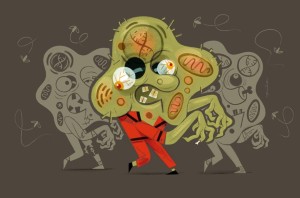3.039 AMICOR (24) em construção
Dra.Valderês A. Robinson Achutti (*13/06/1931+15/06/2021)
Com duas Leoas...
Rare 'hypernova' explosion detected on fringes of the Milky Way for the first time
(By Brandon Specktor - Senior Writer An artist's impression of the early universe,
around the time of the elusive hypernova explosion. (Image credit: NASA/ Adolf Schaller)
Scientists have found evidence of a rare, gargantuan stellar explosion, dating to the earliest days of the universe — less than a billion years after the Big Bang.
Known as a "magneto-rotational hypernova," this ancient explosion would have been roughly 10 times brighter and more energetic than a typical supernova (the violent death that awaits most stars in the universe, including Earth's sun), leaving behind a strange stew of elements that helped fuel the next generation of stars.
The catastrophic blast was 10 times stronger and brighter than a typical supernova./.../
#From Psiché - Near Death Experiences (NDE)
Gregory Shushanis a researcher of near-death experiences and the afterlife across cultures and throughout history.
In 1881, a Native American man named Squ-sacht-un of the Squaxin Island Tribe in Washington territory fell ill and, by all appearances, died. His wife began funeral preparations. As Squ-sacht-un later recounted:
My breath was out and I died. All at once I saw a shining light – great light – trying my soul. I looked and saw my body had no soul – looked at my own body – it was dead./.../
Da: Academia SRM - Reunião Cultural
Professora Miriam Oliveira enviou: Para visualizar:
https://us02web.zoom.us/rec/share/Ly87p9dKp_EVsvKt_ 53modJ8v1_I0CrJnb_ JlLoih435ZBiNV7f4Qy_0hiSrx0DM. h4id3aLeWDC8RojC (Senha de acesso: h1#&V&0N)
#Henrique Sarmento Barata (*06/01/1933+12/07/2021)
Colega de turma (1960) da Dra. Valderês A. Robinson Achutti, recentemente também falecida
| |||||||||||||||||||||||||||
| |||||||||||||||||||||||||||
| |||||||||||||||||||||||||||
|
#Fom AEON Magazine
Watch a single cell become a complete organism in six pulsing minutes of timelapse
Native to central and southern Europe, the amphibious alpine newt breeds in shallow water, where its larvae are born, hatch and feed on plankton, before sprouting legs and moving to land. This timelapse video from the Dutch director Jan van IJken tracks the development of a single-celled zygote into the hatched larva of an alpine newt. Captured in stunning detail at microscopic scales, Becoming is a remarkable look at the process of cell division and differentiation, whence all animals – from newts to humans – come. For more awe-inspiring biology from van IJken, watch The Art of Flying.
Filmmaker, producer and editor: Jan van IJken
Investigation shows scale of big food corporations' market dominance and political power
In fact, a few powerful transnational companies dominate every link of the food supply chain: from seeds and fertilizers to slaughterhouses and supermarkets to cereals and beers.
#From: Nature News
‘Inflammation clock’ shows immune age
A new measure of chronic, systemic inflammation aims to pinpoint whether your immune system is not as perky as it used to be. Inflammation is one of the key signs of ageing, because older people’s cells become damaged and emit inflammation-causing molecules. People who have a healthy immune system are able to neutralize this inflammation to some extent, whereas others will age faster. Because inflammation is treatable, the new tool — called iAge — could help doctors to determine who would benefit from intervention to stay healthy for longer.
......Senescence
When microbiologists Leonard Hayflick and Paul Moorhead coined the term senescence in 1961, they suggested that it represented ageing on a cellular level. But very little research was done on ageing at the time, and Hayflick recalls people calling him an idiot for making the observation. The idea was ignored for decades.
Killing off cells that refuse to die on their own has proved a powerful anti-ageing strategy in mice. Now it's about to be tested in humans.
“Just by removing senescent cells, you could stimulate new tissue production,” says Jennifer Elisseeff, senior author of the cartilage paper and a biomedical engineer at Johns Hopkins University in Baltimore, Maryland. It jump-starts some of the tissue's natural repair mechanisms, she says.













No comments:
Post a Comment